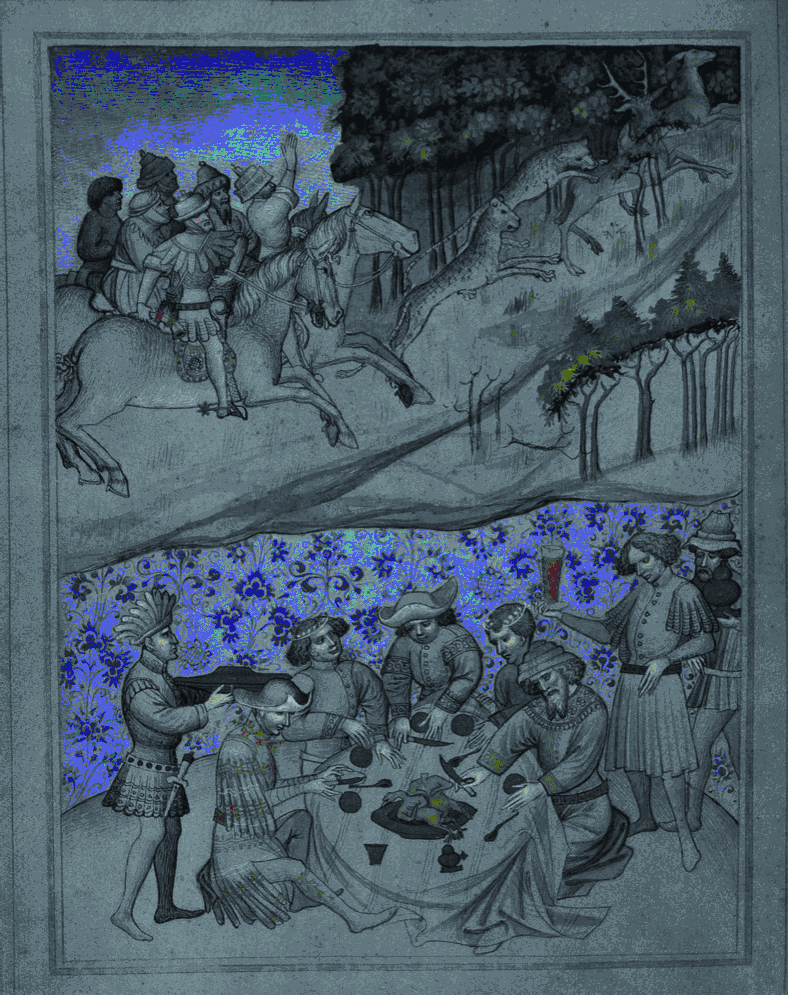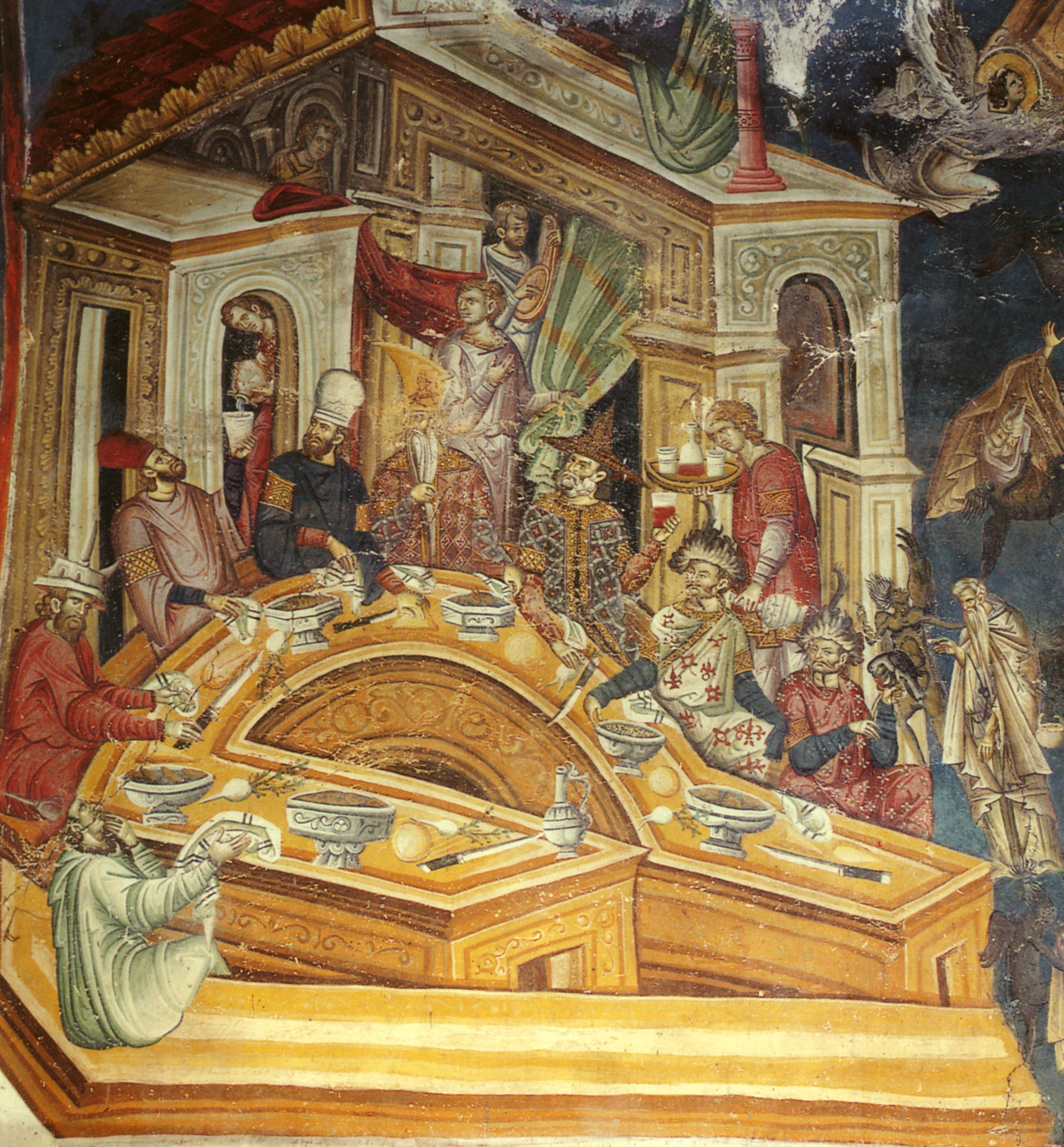CRUSADER STATES
Research on food in the Crusader states can draw on several sound studies, mostly devoted to the production and transportation of food supplies. Heyd’s syntheses still remain unrivalled and provide original information for numerous products consumed in the East (Heyd 1885-1186). Two products circulating in the Eastern Mediterranean were the subject of detailed studies : salt, in the authoritative work by Hocquet (1978-1979), and sugar, for which the study by Ouerfelli (2008) renewed our knowledge of its production, trade and consumption. Other research presents agricultural production on Cyprus (Richard 1977) and in the Levantine area (Richard 1985). Historians have devoted studies based on abundant notarial documentation to the transportation of food supplies (Balard et al. 1994), or to food as part of the military and naval logistics of the Crusades (Pryor 2006).
Different types of sources are available to a historian of food and culinary practices in the Crusader States. Most narratives sources regarding the Crusaders States were gathered into the collection Recueil des historiens des Croisades, Paris 1841-1906 (1. Historiens occidentaux, 5 vol. ; 2. Historiens orientaux, 5 vol. ; 3. Historiens grecs, 2 vol ; 4. Documents arméniens, 2 vol. ; 5. Lois 2 vol.). This collection is completed by the Documents relatives à l’histoire des croisades published by the Académie des inscriptions et belles-lettres, Paris 18 vol., 1946-2003. New editions of narrative sources like the work of Philippe de Novare, Guerra di Federico II in Oriente (1223-1242) by Silvio Melani (Naples 1994) the Cronaca del Templare di Tiro (1243-1344) by Laura Minervini (Naples 2000) are of interest. The narrative chronicle should be complemented by the travel reports of European pilgrims and missionaries who are sometimes interested in descriptions of food habits.
Concerning the kingdom of Cyprus, we have at our disposal the Greek chronicles from the pen of Leontios Machairas and Georges Bustron. Later on, the sixteenth century Italian narratives, the so-called Chronique d'Amadi and Florio Bustron's Historia overo commentarii de Cipro, the works of Etienne de Lusignan can provide interesting information about Cypriot food culture.
Diplomatic material from royal chancellery or religious institutions in the Crusader States provided limited additional data. The Livre des Remembrances of the Secrète of the kingdom of Cyprus for the year 1468-1469 or the Assises de la cour des Bourgeois compiled in Jerusalem around 1240-44 contain information relating the food markets in the cities of the Crusader States well supplied with meat, fish, fruits and vegetable.
The sources of economic and social history are relatively abundant for the coastal cities of the Levant with the Italian merchant activity. Notarial material from the Genoese Lamberto di Sambuceto based in Famagusta, Cyprus from 1294 to 1307 occasionally provide interesting information to help us to draw a picture of food consumption. Trading manual like the Pegolotti’s Pratica della Mercatura and the account books (e. g. Giaccomo Badoer) can be useful to supplement our knowledge of maritime food transport in the medieval Eastern Mediterranean.
P. Trélat
Illustration: A Hunt and Feast in Cyprus
Manuscript (ca. 1420), Jean de Mandeville, Itineraria, ms 2418, fol. 5v, British Library, London.
BYZANTINE EMPIRE 8th c. – 15th c.
For the study of Byzantine food the Greek sources we possess, although related to all regions of the Eastern Mediterranean, vary over time and region. Especially from the 8th century onwards, Byzantine sources focus mainly on describing events and every day life in Asia Minor, the Balkan Peninsula, Southern Italy and the Greek Islands. A special category of sources with dietary interest reproduce the dietary/medical (Hierophilos, Symeon Seth), agronomic (Geoponica) tradition of late antiquity and texts related to warfare (Strategika), offering a Byzantine version and interpretation of these subjects. Other types of source such as chronographies, Lives of Saints and epistolography, provide the major narratives sources for the research of food, gastronomic behaviors, ways of cooking and serving. From the 11th century onwards, documents have survived which provide information for agricultural production, food supplies and trade, for example the Archives of Mount Athos, the Typika (monastic regulations), and from the 14th century, Venetian, Genoese and other diplomatic material for the products and their trade in Constantinople, the Black Sea, the Aegean islands, the Peloponnese and mainly Crete. Speeches, descriptions (ekphraseis), numerous commentaries of ancient writers, works that often compare old products and old culinary practices with corresponding Byzantine ones, contain, in varying degrees, information on food, food markets, utensils, and ways of serving food. Typical examples are the commentaries of Eustathios of Thessaloniki (12th century), who is considered the author of the Epitome Athenaios' Deipnosophists, this all time unique gastronomic composition. Also, of special interest are the satires which provide information on products and foods, fruits (Porikologos), fish (Opsarologos), birds (Poulologos), dishes and courses, as well as ways of cooking and serving food (Ptochoprodromos).
The last 25 years all these sources have been used in studies (Koder 1993, 2005; Dalby 1996, 2003; Mylona 2008; Anagnostakis 2008), and appeared in conference papers and collective volumes (Thomas and Constantinides Hero eds 2000; Papanikola-Bakirtze ed. 2005; Brubaker and Linardou eds 2007; Anagnostakis 2013). Special mention should be made of the little-known Greek bibliography studying dietary products. Proceedings of Byzantine interest, mostly in Greek with English and French abstracts: History of Greek Wine (1992, 1998), Bread (1994), Oil (1996), Honey (2000), Salt (2001), Milk (2008). Also, the program "Everyday and Social Life in Byzantium", at the Institute of Historical Research / National Hellenic Research Foundation has published collective volumes and monographs on (i) the development of technology for producing and storing wine, olive oil, honey and milk, and (ii) the impact of product cultivation, production, and trade in the economy of Byzantium and the Eastern Mediterranean in the Middle Ages.
I. Anagnostakis
Illustration: Byzantines dining with Foreigners from East and West
Wall painting (1312), Vatopedi Monastery, Mount Athos, Macedonia Greece, exonarthex of the Katholikon of the monastery.
POST-BYZANTINE AND EARLY OTTOMAN ANATOLIA
While scholarly production on food in post-Byzantine and early Ottoman Anatolia remains quite limited, a number of relevant publications do exist that fit the description (Cunbur 1982, Köymen 1982, Mélikoff 1964, Şahin 2008, Trépanier 2014, Ünver 1982, Yusufoğlu 1950a and 1950b). Within this list, scholarly quality is highly uneven, and the reader should remain critical of some of these authors who list food references uncritically collected from the sources, without considering possible changes in the meaning of words over time, and without distinguishing between metaphors drawn from literary influences and more reliable depictions of daily life.
If we expand our interest in food from its consumption to its production and trade, a few more titles should be added to this picture: Elizabeth Zachariadou’s extensive study of commercial treaties between Anatolian emirates and Venice, which do include clauses that shed some light on food as trade commodity (Zachariadou 1984), Lindner’s discussions of nomadic pastoralism (Lindner 1983 and 2007) and a few other titles that mention agricultural practices and their administrative implications (Beldiceanu-Steinherr 1976, Beldiceanu-Steinherr & Beldiceanu 1978, Faroqhi 1976).
A fairly wide array of relevant primary sources is available for those wishing to expand this scholarly production, including a majority of texts that have been published in critical editions. The most obvious might be the travelogue of Ibn Battuta, available in an English translation (Ibn Battuta 1956) that is itself based on an earlier combined Arabic edition/French translation (Ibn Battuta 1877). As a foreigner and outsider, this author sometimes mistakes the meaning of the scenes he witnesses, but his account in unparalleled in the level of detail in provides. Hagiographical works, through their descriptions of various miracles or bons mots of Sufi saints, also constitute a rich source of information. Among those, the lengthiest and most detailed are the Manaqib al-‘Arifin and its close parent Risala-i Sipahsalar for the urban environment, and the Vilayat-nama for the countryside (Vilayetname 2007)
Both chronicles and works of poetry offer some references to food, although these are often informed by literary conventions, to the point of making it difficult or impossible to identify whether any given detail corresponds to any historical reality. Still, the chronicles of Aşıkpaşazade (1949) and the chronicle-like epic poem Dustûrnâme (Enveri 1954) provide more than a few glimpses of food-related practices at various levels in the social hierarchy. One should also note the passages devoted to Anatolia in the encyclopedic work of al-Umarî (2003) whose interest in trade-related topics often intersect with those of food historians.
Finally, vakfiyes, or endowment deeds, might be both the most promising and the most under-used category of sources for the period that precedes large-scale availability of Ottoman archives, which begins in the later part of the fifteenth century. These documents will interest food historians in two ways. First, they describe the meals that the endowed institutions provided to members of Sufi orders and the local poors. Secondly, they also give very detailed descriptions of the agricultural land endowed to fund such institutions, therefore offering the potential of gaining insight into the land that peasants cultivated. Overall, then, the post-Byzantine and early Ottoman era in Anatolian history remains a promising one for historians interested in food.
N. Trépanier


